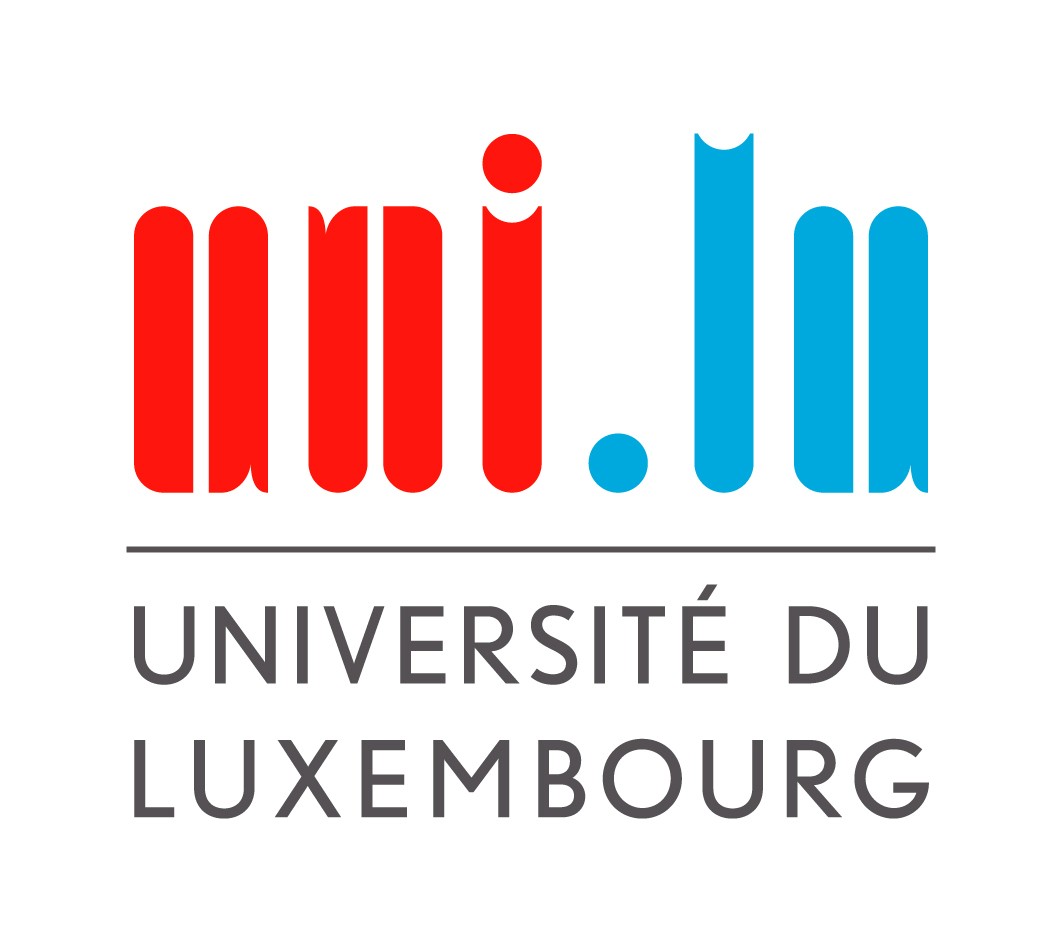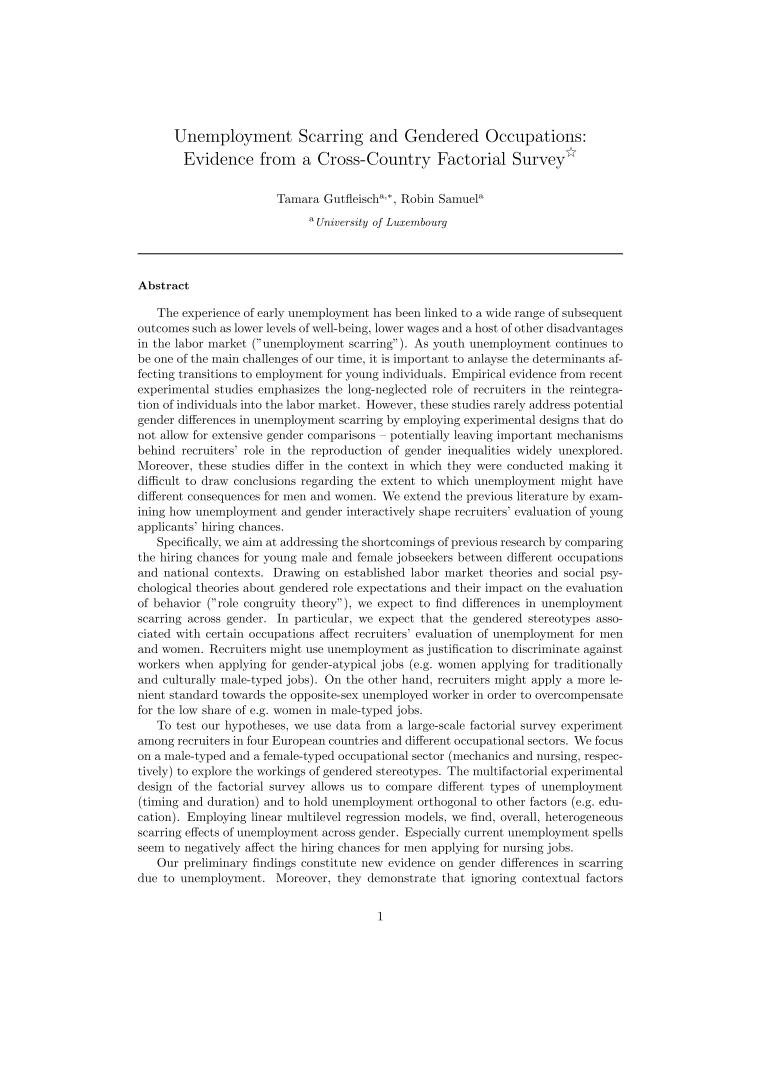The experience of early unemployment has been linked to a wide range of subsequent outcomes such as lower levels of well-being, lower wages and a host of other disadvantages in the labor market (“unemployment scarring”). As youth unemployment continues to be one of the main challenges of our time, it is important to analyse the determinants affecting transitions to employment for young individuals. Empirical evidence from recent experimental studies emphasizes the long-neglected role of recruiters in the reintegration of individuals into the labor market. However, these studies rarely address potential gender differences in unemployment scarring by employing experimental designs that do not allow for extensive gender comparisons – potentially leaving important mechanisms behind recruiters’ role in the reproduction of gender inequalities widely unexplored. Moreover, these studies differ in the context in which they were conducted making it difficult to draw conclusions regarding the extent to which unemployment might have different consequences for men and women. We extend the previous literature by examining how unemployment and gender interactively shape recruiters’ evaluation of young applicants’ hiring chances. Speci fically, we aim at addressing the shortcomings of previous research by comparing the hiring chances for young male and female jobseekers between different occupations and national contexts. Drawing on established labor market theories and social psychological theories about gendered role expectations and their impact on the evaluation of behavior (“role congruity theory”), we expect to find differences in unemployment scarring across gender. In particular, we expect that the gendered stereotypes associated with certain occupations affect recruiters’ evaluation of unemployment for men and women. Recruiters might use unemployment as justifi cation to discriminate against workers when applying for gender-atypical jobs (e.g. women applying for traditionally and culturally male-typed jobs). On the other hand, recruiters might apply a more lenient standard towards the opposite-sex unemployed worker in order to overcompensate for the low share of e.g. women in male-typed jobs. To test our hypotheses, we use data from a large-scale factorial survey experiment among recruiters in four European countries and different occupational sectors. We focus on a male-typed and a female-typed occupational sector (mechanics and nursing, respectively) to explore the workings of gendered stereotypes. The multifactorial experimental design of the factorial survey allows us to compare different types of unemployment (timing and duration) and to hold unemployment orthogonal to other factors (e.g. education). Employing linear multilevel regression models, we find, overall, heterogeneous scarring effects of unemployment across gender. Especially current unemployment spells seem to negatively affect the hiring chances for men applying for nursing jobs. Our preliminary findings constitute new evidence on gender differences in scarring due to unemployment. Moreover, they demonstrate that ignoring contextual factors in studying heterogeneous scarring effects across gender potentially leaves important mechanisms in recruiters’ hiring decisions undetected. This study further contributes to the literature on transitions to employment as well as on gender inequalities in the labor market more generally by studying the demand-side mechanisms leading recruiters to discriminate against men and women in gendered-occupations.
Unemployment scarring and gendered occupations: Evidence from a cross-country factorial survey
Suggested Citation
Gutfleisch, T. R. & Samuel, R. (2019). Unemployment scarring and gendered occupations: Evidence from a cross-country factorial survey. Graduate Programme, Institute for Employment Research (IAB). 11th Interdisciplinary Ph.D. Workshop: Perspectives on (Un-) Employment, Nürnberg.


